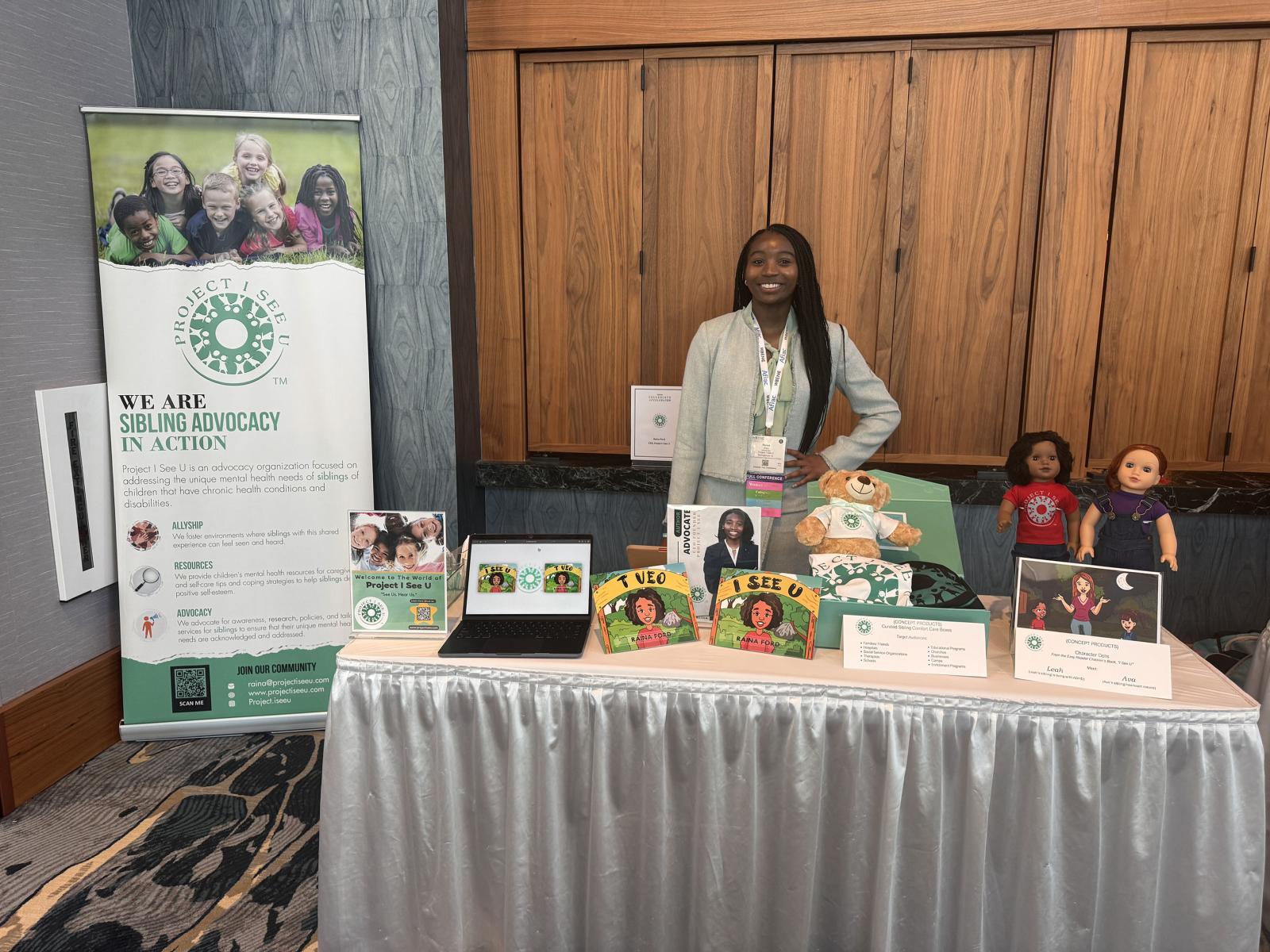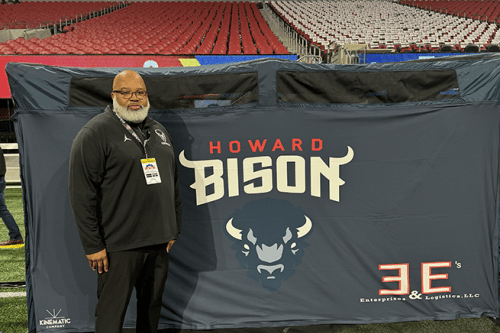Social media has become an integral part of our everyday lives. It’s how we connect, keep up with friends and family, get our news, and shop. We’re even influenced by the people and brands we see on our laptops and phones. In fact, recent statistics from Forbes state that approximately 5 billion people use social media globally, and 90% of those users follow at least one brand on a social media site.
This phenomenon, along with other significant advances in technology which lower barriers to entry and increase opportunities, has given rise to a new generation of entrepreneurs who are using platforms like Instagram, Facebook, and more to build their brands and sell their products.
There’s no way in today’s world that you could be highly successful in the marketplace without having a social media presence.”
“There’s no way in today’s world that you could be highly successful in the marketplace without having a social media presence,” explained Dr. Tia C. M. Tyree, interim associate dean and professor in the Cathy Hughes School of Communications. “You have to be where most of the customers are,” she continued, noting that these platforms have “ensured that businesses can sell effectively and easily.”
This was a lesson graduating senior Justin DeCambre learned early, and almost accidently. Beginning his business while still in high school and during COVID-19, the computer information systems major started out reselling sneakers he bought in store online at a higher price point when they sold out. “Then one day I was sitting in my room with all these sneakers, thinking ‘what can I do to make my own? What can I do to be original?’” This sparked his desire to create. “I just wanted a platform where I could show people how I feel, how I dress, my fashion and my style and where I grew up. I started sketching out and drawing — designing T-shirts,” he said. So he added his designs to a popular social media platform.

Up until this time, DeCambre was using his website and word of mouth via friends and family members to get the word out about, and sell, his designs. “Everything you do is trial and error, because you don’t know what works; you don’t know what tomorrow will bring,” he said. What tomorrow brought was approximately 2,300 orders via the social app. “I woke up to my phone like buzzing, buzzing, buzzing, buzzing, and I had a whole bunch of Shopify orders,” he continued, noting he wasn’t sure where the orders were coming from; thinking he “just got lucky.” However, he went online and, “I see that it’s the video I posted — a video of me pointing at the ceiling with a caption ‘if I release these clothes, would you support?’”
They did support, with likes, shares, and “at one point something like a million views,” said DeCambre. His website was on the platform’s profile, and this viral moment turned into sales and additional exposure, marking a significant milestone in the DoubleMs owner’s entrepreneurial journey. From that one video, pre-orders of his T-shirts resulted in over $40,000 in revenue. “That’s what I love about social media marketing, now it’s so easy. You don’t need a brick and mortar like you once needed to showcase to the world what you have,” he said.
Viewers of DeCambre’s post likely connected with him and bought into his story as a young man with a dream to own his own business, just like his grandfather before him. According to Tyree, creating these kinds of moments is the key to success for businesses and business owners, big and small, as social media has changed norms within the industry.
“What social media gives to business owners is a chance to story-tell,” said Tyree, explaining that sharing in this manner hasn’t traditionally been a core function of selling products or services. “In today’s society, it’s more about the content than the product; the service that you might be offering is less important as the experience associated with the service,” she continued. “The marketing and advertising paradigm, it’s not just about buying time to sell a product, it’s about being on social media and connecting to customers in a different way.”
Sophomore international business major Raina Ford is using her personal story to connect with potential customers, though she says she’s just recently become comfortable calling herself “an entrepreneur with a product.” The founder and CEO of Project I See U started her organization to raise awareness about the “unique emotional needs” of the siblings of children suffering from chronic illness or a disability, and to provide “sibling-centric services, support for research and programming, and educational resources for families, educators, and providers”— not to necessarily sell a book. However, in “I See U,” Ford shares lessons learned growing up with a sibling with a disability, seeking to help others in similar families. And like DeCambre, she began her journey while in high school, with the support of her school, friends, and family — and a website.
“I built a website and started becoming more comfortable reaching out to organizations and larger figures in my community,” began Ford. “That looked like for me going to Rainbow PUSH [Coalition], spearheaded by Rev. Jesse Jackson and his entire team; and going on to speak on their morning show and promoting my book, my product, and our mission.”

That said, Ford didn’t initially lean into social media, still working through how she wanted to position her company and self. “I started off with word of mouth but then transitioned to Instagram; I was still trying to figure out my path and how I wanted to brand my company,” she said. At first, she posted tips for parents on how to better support siblings, related statistics and videos, and other content. However, she found that she didn’t like the format of her account, saying that it was “giving social agency, and it's a business first and foremost.” “So, I went back, rebranded, learned a lot of lessons.”
For Ford, the product fuels her ability to provide a service and further her organization’s mission. “I had to pivot because, at the forefront of everything, I’m trying to sell products and make revenue so I can do the conscious efforts that I want to do.”
Using social media to influence and sell products and services is relatively new, emerging in the mid-2000s with platforms like Myspace and Facebook, which introduced Facebook Ads in 2007. That said, many like Ford are figuring out what works best for them and their brand as they go. For example, Ford doesn’t have several social media accounts, and though she rebranded her Instagram, she doesn’t update it constantly.
“A lot of influencers and people push for you to keep putting content out continuously,” began Ford. “I got to the point where I was really grappling with what I should post because it wasn't feeling genuine. It was feeling rushed and forced, so I’ve learned the importance of patience and fully fleshing out your idea before you post anything.”
Tyree cautions that authenticity is important, especially when selling a service.
“When you are selling a service, you more often than not are selling yourself. It’s who I am, what I bring to the marketplace, how you can learn from me, and what being connected to me will do for you and your life, your finances, your experiences,” said Tyree. “So, it is critical that those that are selling services understand that you have to create content that makes people believe in who you are, and why they should attach themselves to you and your service.”

For DeCambre, a mix of social media accounts — even multiple targeted accounts on the same platform — has helped propel his brand and company to become well-known on Howard’s campus. For example, there’s a main company account, as well as a dedicated Instagram account for Howard students, @meccamillions, which promotes “HU events, drops, and student-only deals,” fostering a sense of community. For him, posting consistently about his clothing brand and utilizing multiple platforms works well, and he advises others to “just start” when it comes to creating a social media presence and following. He says to be intentional, put yourself out there, leverage community (for students, especially the HU community) and do what is natural for you and your company, not just what will “go viral.”
“If you can’t be consistent and can’t just do it out of simple passion and enjoyment, then you’re in it for the wrong reasons,” he said. “I would just post videos of me designing stuff because it was fun to me, you and I didn’t expect to go viral, I just put it up there so people could see it,” he said.
When asked about the risks associated with building your brand and business on social media platforms, the professor noted the importance of being “ready” for a viral moment if it comes. “Business owners have to be concerned about making a big impact going viral and then not having the infrastructure in place to fulfill orders or to answer the questions or to be ready to propel their business by having the next product, service, or event to follow up on,” she cautioned. “Business owners have to be very mindful that you must be ready to come into the marketplace. You have to be ready to go viral. You have to be ready to say ‘I am in this. I want to be successful.’”
While social media is an important part of business’s ability to be successful today, don’t forget those traditional methods to get your name and brand out there. For example, Ford recommends participating in pop-up events like the recent Bison Owned day on campus, as well as seeking speaking opportunities which allow you to be in the room with people who will help amplify your business.

“What has helped me sell the most books has been the rooms that I’ve been able to place myself in, and the people that have been in those rooms have heard my story, my mission, and have believed in me,” said Ford. “It’s gotten to the point where I’m getting texts or calls like, ‘hey, I thought of you for this opportunity’ or ‘I saw your pitch.’ You have those people, whoever they may be, vouching for you and sharing your business and your business name. That is important and impactful.”
Tyree also discussed tapping into those within your networks who have, or want to have, some influence themselves. “Everybody wants to be an influencer. Everybody wants to be a brand ambassador. Use the folks around you who want to create their own space in social media to benefit you and your business,” she advised. This is networking, though it looks a little different; these connections can make all the difference and open doors.
“The biggest thing is to create those partnerships. Share your content with others who might have influence, and/or connections in communities online that you are not attached to, and that will allow you to infiltrate circles that you might not otherwise have on your own,” said Tyree.
The bottom line is that our culture is saturated with the need to tell stories, connect, and be a part of a larger experience”
Social media platforms have become instrumental in the ability for business owners to build a following and in turn grow their businesses, and Tyree believes that will continue to be the case. However, it’s equally important to grow community.
“The bottom line is that our culture is saturated with the need to tell stories, connect, and be a part of a larger experience,” she said. “What is critical for a business owner is to understand how to make sure you’re present in all the places that matter.”





